Day 2 :
Keynote Forum
Sebouh Kassis
Al Zahra Hospital, UAE
Keynote: Managing non functioning pituitary neuroendocrine tumors based on the best available evidence
Time : 09:00-09:50
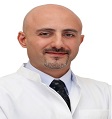
Biography:
Abstract:
Keynote Forum
Gajendra Prasad Rauniar
B.P.Koirala Institute of Health Sciences, Nepal
Keynote: Therapeutic drug monitoring of antiepileptic drugs in BPKIHS, Dharan
Time : 09:50-10:40

Biography:
Gajendra Prasad Rauniar is currently working as a Professor in the Department of Clinical Pharmacology and Therapeutics at B.P. Koirala Institute of Health Sciences, Dharan, Nepal. He has published more than 60 scientific papers in national and international journals. He is currently doing research in neuropharmacology related clinical trials as well as drug utilization.
Abstract:
Keynote Forum
Hischam Bassiouni
Klinikum St. Marien Amberg, Germany
Keynote: Lesion-tailored approaches in spinal surgery
Time : 11:00-11:50
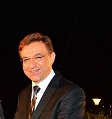
Biography:
Abstract:
- Spine and Spinal Disorders|Spine Surgery | Neuropharmacology
Location: Dubai, UAE
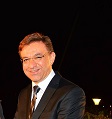
Chair
Hischam Bassiouni
Klinikum St. Marien Amberg, Germany
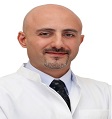
Co-Chair
Sebouh Kassis
Al Zahra Hospital, UAE
Session Introduction
Basem Awad
Mansoura University Hospital, Egypt
Title: Lateral extracavitary approach to spinal tumors
Time : 11:50-12:20
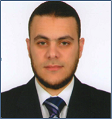
Biography:
Basem I. Awad is an Assistant Professor of Neurosurgery from Egypt, currently working at Mansoura University School of Medicine, in Mansoura, Egypt. He is the Educational Neuro officer at the AOSpine Egypt Council Board. He has completed his Master Degree of Surgery at Mansoura University, Egypt and Doctorate Degree at Joint between Case Western Reserve University, Cleveland, OH and Mansoura University. He also received the Crockard International Spine Fellowship at Cleveland Clinic and the AOSpine International Fellowship at the Center for Spinal Disorders, CO, USA. Recently, he completed Bioinformatics PostDoc Fellowship at Luxembourg Center for Systems Biomedicine, University of Luxembourg. Dr. Awad is also member of many international socities e.g. American Association of Neurosurgery (AANS), Congress of Neurosurgery (CNS), AOSpine, and North Americam Spine Society (NASS). He was selected to be on of the EDITORIAL BOARD for the Global Spine journal and World NEUROSURGERY Journal. His neurosurgical and scientific subspecializations includes spinal disorders and surgery, spinal trauma, spinal cord injury, neuro-oncology.
Abstract:
The surgical management of pathology involving the ventral aspect of the thoracic and upper lumbar spine is typically challenging. Thoracotomy provides direct ventral exposure of the spine and spinalcord. However the approach related morbidities could be markedly significant while a separate dorsal approach may be required for instrumentation. The Lateral Extracavitary Approach (LECA) is a dorsolateral approach that provides lateral and ventral access to thoracic and upper lumbar spine without entrance into the pleural cavity. By remaining extra pleural, the LECA avoids the complications noticed previously with thoracotomy. Neural decompression, tumor removal and fixation can all be accomplished via LECA, which makes it an invaluable tool in spinal surgery. This technical advantage has led to excellent neurological outcomes with nearly 75% of patients described in the literature revealing neurological improvement. In the present study, we reviewed 15 patients with spinal tumors treated with anterior and posterior resection and reconstruction from a single posterior approach. Pre- and post-operative neurological condition means blood loss, length of hospital stay after surgery and complications related directly to surgery were analyzed. Pre- and post-operative Computed Tomography (CT) scans and Magnetic Resonance Imaging (MRI) scans were evaluated. Our results showed neurological improvement in 69.2%, 29.2% experienced no change and 1.5% reported worse condition. Mean blood loss was 2,134 mL and hospital stay was 7.2 days. Total complication rate were 15.5%. In conclusion the adequate neural decompression combined with anterior and posterior column reconstruction is feasible through lateral extracavitary approach using a single posterior skin incision. Minimally Invasive (MIS) approaches are now being applied in all areas of the spine surgeries including LECA. MIS LECA approach is purported to have decreased operative time, reduced blood loss, less tissue dissection, less perioperative pain and earlier mobility.
Basem Awad
Mansoura University Hospital, Egypt
Title: Minimally invasive approach for intradural extra-medullary spinal tumors
Time : 12:20-12:50
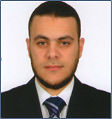
Biography:
Basem I. Awad is an Assistant Professor of Neurosurgery from Egypt, currently working at Mansoura University School of Medicine, in Mansoura, Egypt. He is the Educational Neuro officer at the AOSpine Egypt Council Board. He has completed his Master Degree of Surgery at Mansoura University, Egypt and Doctorate Degree at Joint between Case Western Reserve University, Cleveland, OH and Mansoura University. He also received the Crockard International Spine Fellowship at Cleveland Clinic and the AOSpine International Fellowship at the Center for Spinal Disorders, CO, USA. Recently, he completed Bioinformatics PostDoc Fellowship at Luxembourg Center for Systems Biomedicine, University of Luxembourg. Dr. Awad is also member of many international socities e.g. American Association of Neurosurgery (AANS), Congress of Neurosurgery (CNS), AOSpine, and North Americam Spine Society (NASS). He was selected to be on of the EDITORIAL BOARD for the Global Spine journal and World NEUROSURGERY Journal. His neurosurgical and scientific sub specializations includes spinal disorders and surgery, spinal trauma, spinal cord injury, neuro-oncology.
Abstract:
Arman Rahimmi
Kurdistan University of Medical Sciences, Iran
Title: Are anti-oxidants & anti-inflammatory compounds good choices for curing Parkinson’s disease?
Time : 14:00-14:30
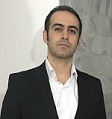
Biography:
Arman Rahimmi is a PhD student of Molecular Medicine in Kurdistan University Medical Sciences, Sanandaj, Iran. His research works has been focused on molecular nature of neurodegenerative disease especially Parkinson’s disease. His studies include the role of oxidative stress and inflammation in those diseases and evaluate potentials of antioxidants and anti-inflammatory compounds for treating them.
Abstract:
Parkinson’s Disease (PD) is a progressive neurodegenerative disorder, which is considered as one of the most prevalent diseases of Central Nervous System (CNS). Its clinical signs include both motor (resting tremor, rigidity and bradykinesia) and mental disorders (cognitive problems, behavioral impairments and dementia). These clinical symptoms are mainly the consequents of progressive loss of dopaminergic (DAergic) neurons in brain, especially those of Substantia Nigra (SN) and Striatum (ST). Accordingly, current PD therapies focus on maintaining dopamine levels of brain at normal range. However, this approach is fairly useful to control and manage Parkinson’s disease, it has some disadvantages. Firstly, patients need higher doses of drugs over time which it implies some serious side effects such as psychosis, motor fluctuations, and dyskinesias. Additionally, PD patients under this type of treatment develop a series of dopa-resistant motor symptoms (speech impairment, abnormal posture, and gait and balance problems) and dopa-resistant non-motor signs (anosmia, sleep disorders, autonomic dysfunction, mood impairment and pain) after a while. In this regard, previous studies indicate that Levodopa and other dopaminergic medications accelerate neuronal degeneration in some parkinsonian brains via production of free radicals and Reactive Oxygen Species (ROS). This is in addition to the main oxidative and inflammatory processes of PD. Literature strongly confirm the role of oxidative stress and inflammation in development and progression of Parkinson’s disease. So that, during the recent years, interest in administration of neuroprotective factors such as brain repairing antioxidants and anti-inflammatory drugs for management of PD is being popular, increasingly. On the other hand, since PD is a chronic and long-lasting disease, it is important to improve life quality and life expectancy of PD patients by appropriate medications. According to the above literature, it is important to understand the mechanism of action of these neuro-protectant factors and investigate the new and more effective ones. Therefore, the objective of this article is to do a comprehensive review on oxidative and inflammatory mechanisms playing role in pathogenesis of PD. We also highlight the studies concerning antioxidant and anti-inflammation therapies for PD and their molecular mechanisms of action.
Stefan Reguli
University Hospital Ostrava Poruba, Czech Republic
Title: Long non-coding RNA analysis in glioblastoma
Time : 14:30-15:00
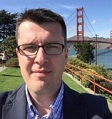
Biography:
Abstract:
Olaitan Jeremiah
Royal College of Surgeons in Ireland (RCSI), Ireland
Title: Evaluation of the effect of insulin sensitivity- enhancing lifestyle- and dietary- related adjuncts on antidepressant treatment response: A systematic review and meta-analysis
Time : 15:30-16:00

